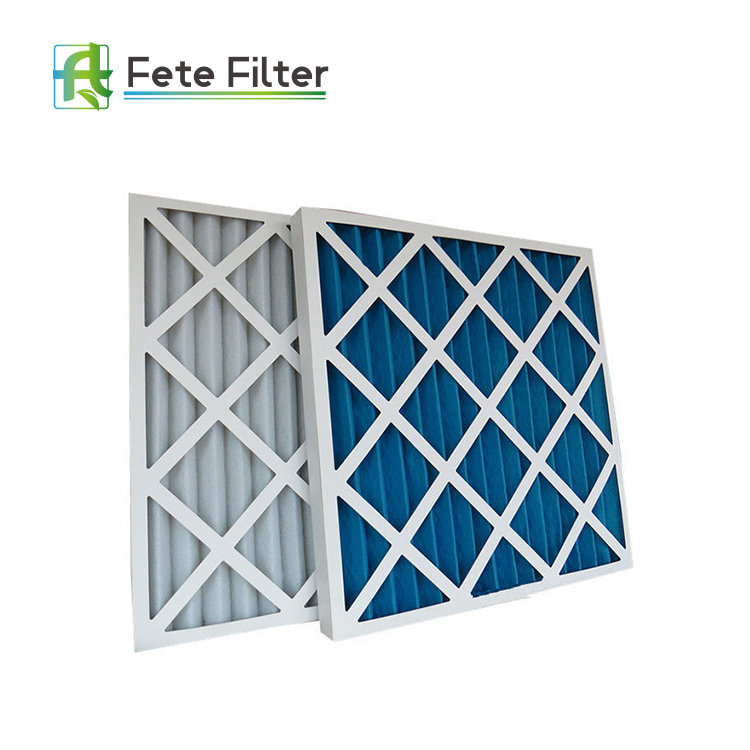In this post, we're covering the topic, "What is a pre-filter air filter?" And if you’ve ever wondered what an air purifier pre-filter is, how a pre-filter works, or what it can do for you, then this guide has all of the answers you need. By the end, you'll know everything there is about what is a pre-filter in an air purifier so you can make the right decision when choosing a product like this to clean the air in your home.

What is a Pre-Filter?
A pre-filter is an air filter that removes large particles like dust, dirt, and hair. Pre-filters are the first step in the air filtration process on an air purifier. A pre-filter protects the main air filters from getting clogged up with debris so they can trap microscopic pollutants.
Pre-filters are used in air purifying equipment that is installed in homes, commercial buildings, transports, and public areas. There are many varieties of technologies and manufacturer requirements for pre-filter air filters and therefore, no standardized regulations about the performance and effectiveness exist.
How Does a Pre-Filter Work?
A pre-filter works by collecting large particles before they enter the air purifier unit. Pre-filter air filters work in a similar manner to a sieve. Air flows through the small pores or netting of the pre-filter while dust, dirt, and hair get trapped on the surface of the pre-filter.
What is a Pre-Filter Used for?
A pre-filter is used for two things: capturing large particles and extending the life of the main internal filters. Pre-filters are used to protect the main internal filters so they can filter out smaller contaminants and this helps the main filter last longer and be more efficient.
An air purifier pre-filter, on the other hand, is used for trapping particles that are around 2 microns and larger (i.e. dust, dirt, hair, and some pollen).
As you can see, HEPA filters and pre-filters are used for two distinct purposes and each type of filter depends on the other for improved efficiency.
In this research study on enhancing indoor air quality with air filters, the followed was discovered, In the air cleaners, the air was filtered first by a coarse pre-filter, followed by a Rota-filter, in which small dust particles were captured by rotation at high speed. The last filter consisted of a high efficiency particulate air (HEPA)-type filter, filtering 70% of 0.3-μm particles and 95% of 1.0-μm particles. The air cleaners in this study clearly showed the capacity to capture substantial amounts of airborne dust particles and airborne allergens.”
The efficiency ratings in that research study for the air purifiers would have likely been different if a pre-filter was not used.
Types of Pre-Filters
There are two types of pre-filters: mesh and carbon. A mesh pre-filter only traps solid particles. A carbon filter traps both solid particles and gaseous pollutants. The type of pre-filter used in an air purifier will depend on the other types of internal filters.
A mesh pre-filter air filter is similar to a sieve. It is made up of small pores or netting that allow air to flow through but stops large particles like dust, dirt, hair, and other debris. The sole purpose of a mesh pre-filter is to trap large contaminants before they enter the air purifier unit.
A carbon filter air filter is a more advanced type of pre-filter. It is made up of activated carbon material that is in either powered, granular, or honeycomb form. An activated carbon air filter will do two things: stop large particles from entering the air purifier and trap gaseous pollutants like chemical vapors, volatile organic compounds (VOCs), and odor molecules. This leads to cleaner air that has fewer toxins and smells fresher.
Do I Need a Pre-Filter?
A pre-filter is an essential part of an air purifier because it sieves large particles that can impede or shorten the life of the filtration system. A pre-filter is good to have because it protects the main internal filters from damage.
With that said, you don’t necessarily need a pre-filter on an air purifier; however, it does improve the efficiency of the unit. Therefore, we always recommend that you choose an air purifier that has at least an activated carbon filter that acts as a dual pre-filter and odor remover.
The next best option would be an air purifier with its own dedicated mesh pre-filter that works to protect the main HEPA air filter and activated carbon filter.
To learn about fan filter units, visit our website and stay tuned for future blog posts. Next week we’ll be discussing “How to Apply Fan Filter Units” as part of a larger HVAC system.







